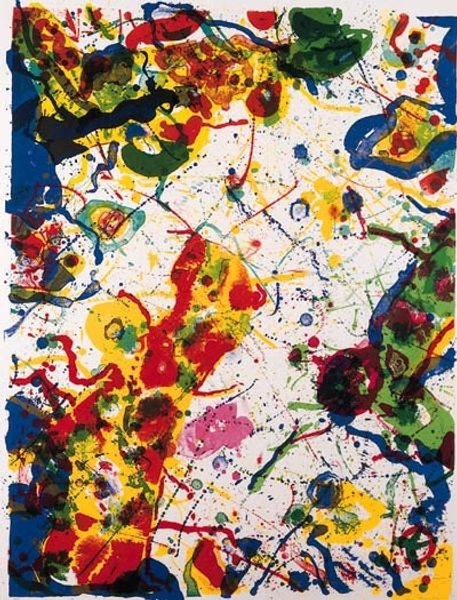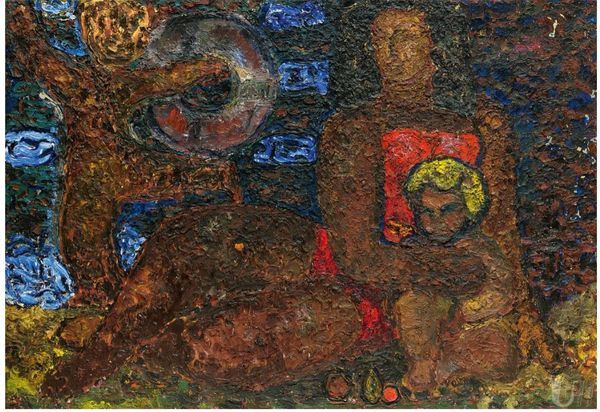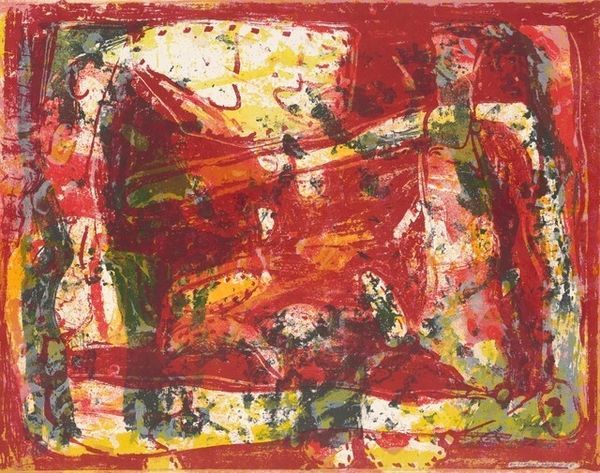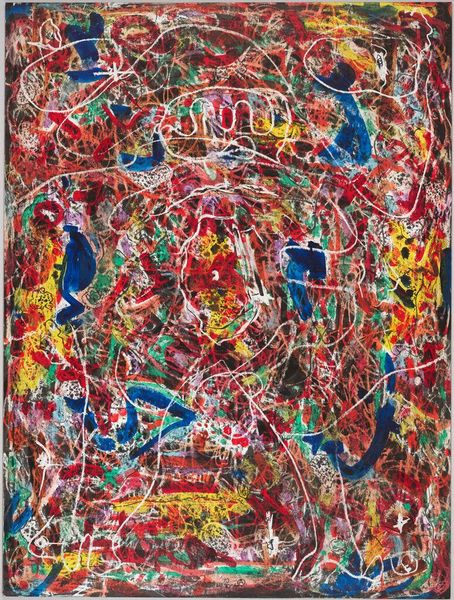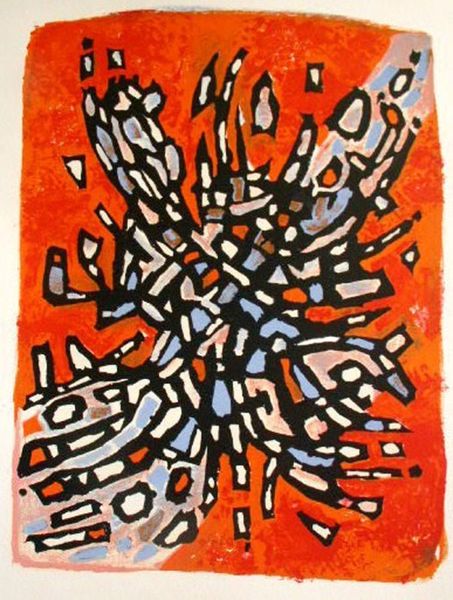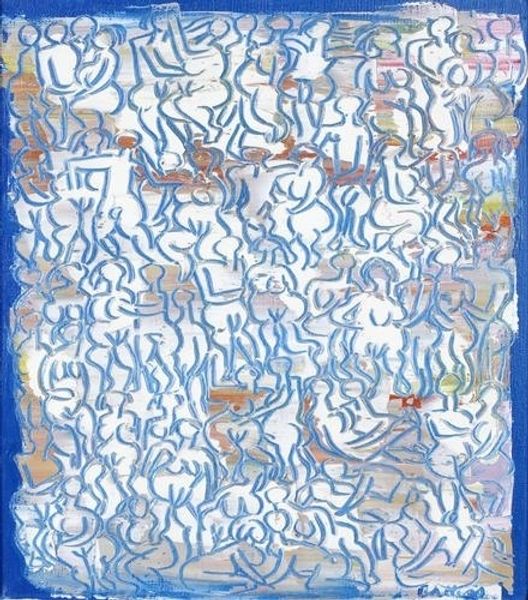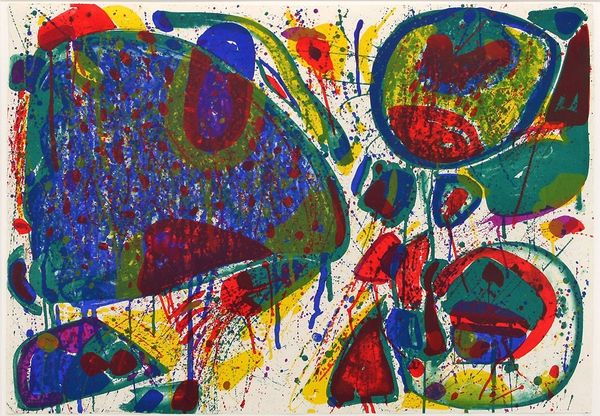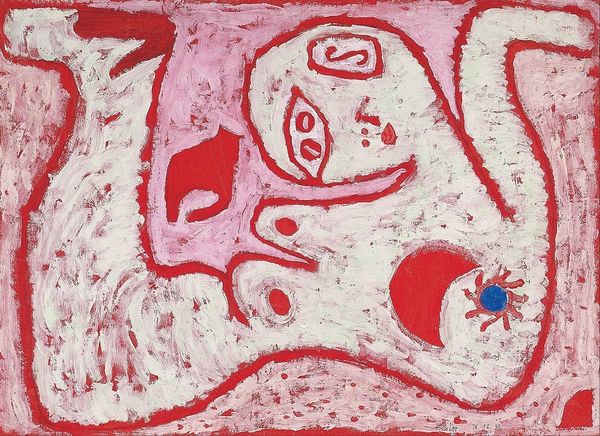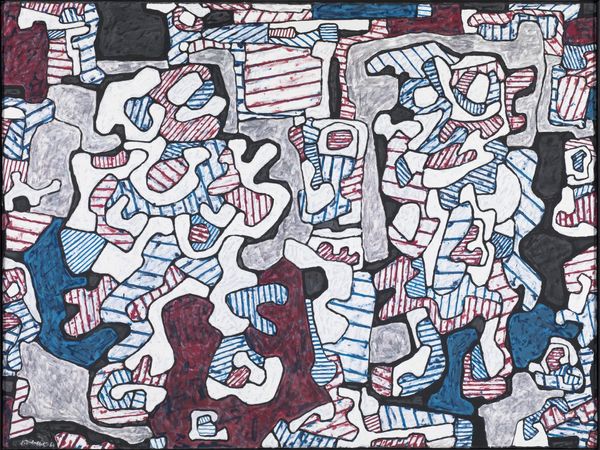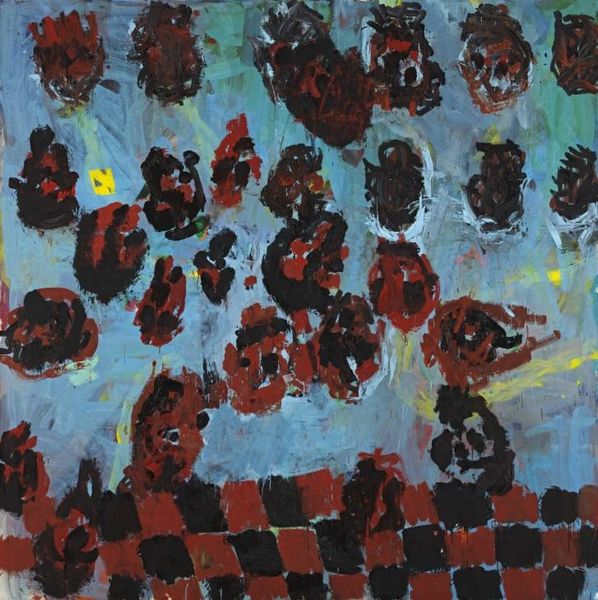
mixed-media, matter-painting, acrylic-paint
#
mixed-media
#
matter-painting
#
acrylic-paint
#
figuration
#
art-informel
Dimensions: overall: 116 x 89 cm (45 11/16 x 35 1/16 in.) framed: 136.5 x 109.5 x 6.4 cm (53 3/4 x 43 1/8 x 2 1/2 in.)
Copyright: National Gallery of Art: CC0 1.0
Curator: Jean Dubuffet's "La Fiat aux pare-chocs," created in 1961, exemplifies his exploration of "matter painting," employing mixed-media including acrylic paint. Editor: It’s a dense, chaotic composition. The colors, though vibrant, create a sort of visual overload. What immediately strikes me is how flat it is, almost aggressively so. Curator: Dubuffet was reacting against the conventions of high art. By incorporating industrial imagery and the rawness of everyday materials, he questioned the very nature of what constitutes art. He challenged traditional values through his artistic labor. Editor: Looking closer, there's a crude charm in those awkward, cartoonish car forms outlined in white against that turbulent, earthy ground. Semiotically, it is difficult not to wonder at what the combination of industrial icons and abstract figures might signify? Curator: Consider the social context—the rise of consumer culture, mass production. Dubuffet is taking the detritus of this culture and transforming it through his artistic labor. Notice how the words scrawled onto the canvas resemble graffiti. It shows that even text itself can be considered a material element. Editor: Absolutely. The composition is dense with impasto textures and frantic mark-making, lacking a clear hierarchy, demanding a different way of seeing and de-familiarizing common imagery. The materiality combined with the composition asks a very contemporary question, how much art is truly worth? Curator: By imbuing these discarded symbols of modernity with artistic value, he confronts our consumption patterns. Each daub of paint serves to underline the process of making and consuming as almost simultaneous. Editor: Ultimately, for me, this is an artwork with undeniable presence. Dubuffet's orchestration of form and matter speaks to a fundamental urge to transform ordinary subjects and to express something elemental and visceral. Curator: I see it as an early engagement with recycling practices in the art world. A reminder that our present artistic materials become historical testaments to what we choose to discard, but never quite lose.
Comments
No comments
Be the first to comment and join the conversation on the ultimate creative platform.
